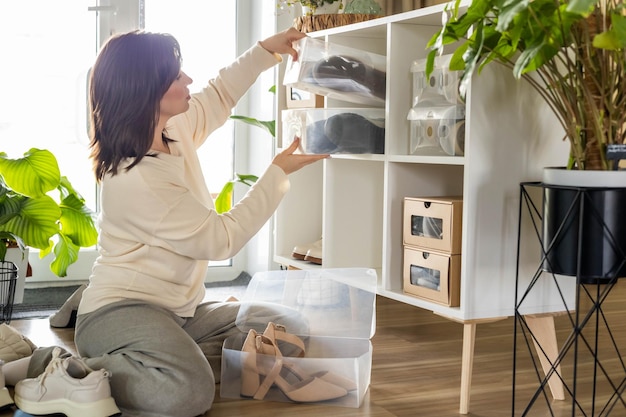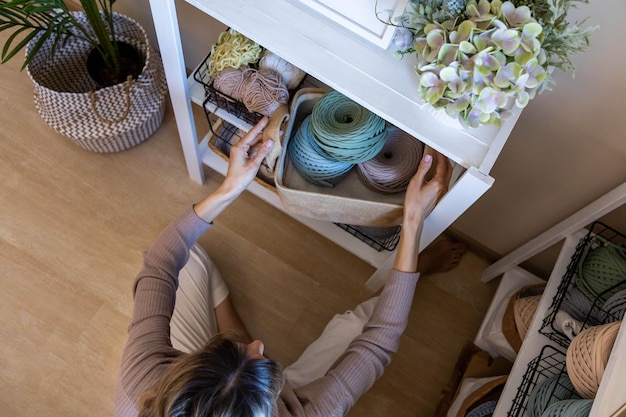Hi, I’m Claire! I’ve always been drawn to the Tips for Minimalist Styling—its calm, uncluttered beauty and the sense of balance it brings to a space. I used to feel overwhelmed by the amount of “stuff” in my home and the constant need to organise everything. Embracing minimalist styling has made my home feel lighter, simpler, and more peaceful.
If you’re looking for tips on incorporating minimalist styling in your space, I’m here to help! These 7 transformative steps will help you create a home that’s not only stylish but also brings a sense of calm and ease to everyday life.
1. Declutter Ruthlessly for an Open, Breathable Space

The first step in minimalist styling is clearing out anything you don’t need or truly love. When I began decluttering, I couldn’t believe how much excess there was! I found that letting go of items that weren’t serving me or didn’t bring joy helped create a more open, breathable space.
To start, go through each room and look at every item—yes, every single one. Ask yourself: Do I need this? Do I use it? Does it add to my happiness or the look I want to create? If the answer is no, let it go.
Decluttering tips for minimalist success:
- Start small: Begin with one area, like your closet or kitchen countertops, so it doesn’t feel overwhelming.
- Use the “one in, one out” rule: When you buy something new, discard a similar item to avoid accumulating excess.
- Keep only what adds value: If it doesn’t serve a purpose or bring joy, it’s probably not worth keeping.
2. Embrace a Neutral Colour Palette for Timeless Style
Minimalist spaces are known for their neutral colour schemes, which create a calm and cohesive look. Light colours, like whites, greys, and soft earth tones, work well because they reflect light, making a space feel airy and open. In my home, I stuck with soft greys and creams, adding small pops of colour in places like cushions and art to keep it interesting.
A neutral palette also allows you to play with textures—think smooth wood, soft linen, or cosy wool. Texture adds dimension to a space without overpowering it.
Colour tips for minimalist styling:
- Stick to a simple palette: Choose one or two main colours and add interest through shades and textures.
- Add warmth with natural tones: Earthy neutrals like beige and tan create a welcoming vibe.
- Use bold colours sparingly: A single, subtle accent can make a statement without cluttering the look.
3. Invest in Quality Over Quantity for a Lasting Impact
Minimalist styling isn’t about filling your space with the cheapest items you can find; it’s about choosing a few high-quality pieces that you genuinely love and that will last. Instead of filling my space with lots of trendy items, I now focus on investing in timeless pieces that I know I’ll appreciate for years.
When shopping for your space, ask yourself if each piece is versatile, durable, and complements the other elements in your home. High-quality doesn’t necessarily mean expensive; it just means choosing items that you know will stand the test of time.
Quality-over-quantity tips:
- Buy less but choose better: A few well-made pieces make more impact than lots of lower-quality items.
- Look for versatile designs: Items that are functional and flexible add value to a minimalist home.
- Focus on timeless designs: Avoid trends that may look outdated quickly. Instead, go for classic, understated styles.
4. Create Visual Balance by Spacing Out Your Decor
One of the best tips for minimalist styling is to give each item in your space “room to breathe.” Minimalism is all about creating balance, so avoid crowding furniture, decor, or artwork too close together. Spacing items out makes your home feel more organised and adds to the sense of calm that minimalist design brings.
When arranging furniture or decor, try keeping a bit of negative space between items. I’ve found that fewer pieces arranged thoughtfully can create a much more harmonious look than squeezing lots of items into one area.
Ways to create visual balance:
- Avoid crowding furniture: Arrange items to allow easy movement and an open flow.
- Use negative space: Leave blank areas on walls or shelves to make other pieces stand out.
- Arrange decor in odd numbers: Odd numbers, like groups of three, create a balanced yet interesting visual layout.
5. Organise with Style: Opt for Hidden Storage

Minimalist styling doesn’t mean you don’t have belongings; it just means keeping things neat and out of sight when not in use. Clever storage is key for a minimalist home; hidden storage options are my favourites. They keep everything I need accessible without cluttering up the look of the room.
From furniture with built-in storage to decorative boxes and baskets, there are plenty of ways to keep your essentials organised and tucked away. In my living room, I have a coffee table with drawers and use decorative baskets to hide remotes, chargers, and small items that would otherwise look messy.
Stylish storage solutions for minimalism:
- Choose multi-functional furniture: Ottomans, coffee tables, and benches with hidden storage keep clutter under control.
- Use decorative baskets and boxes: These keep small items organised while adding texture to the room.
- Add shelves for open display: If you have items you want to show off, arrange them neatly on a few open shelves.
6. Select Functional Decor That Adds Value to the Space
Minimalist styling doesn’t mean bare; it’s about choosing decor that enhances the space’s functionality or aesthetic. Functional decor—like a clock, a stylish light fixture, or a cosy throw—can add comfort and beauty without creating clutter.
In my own home, I use simple wall art, a few indoor plants, and a soft rug to warm up the space. These items serve a purpose (the plants purify the air, and the rug adds comfort underfoot) while contributing to the overall look.
Ideas for functional decor:
- House plants: They bring life into the space and have natural air-purifying qualities.
- Minimalist lighting: Simple, beautiful lighting like a pendant or floor lamp enhances the atmosphere.
- Practical accents: Use stylish storage containers or a beautiful clock to add personality.
7. Maintain a Regular Decluttering Routine
Once you’ve created a minimalist space, the final key is to keep it that way by decluttering regularly. Over time, it’s natural to accumulate new items or see things fall out of order, so I recommend setting aside time each season to reassess and tidy up.
Each quarter, I go through my home and see if there’s anything I no longer need or that doesn’t fit my minimalist aesthetic. Regular upkeep keeps my space feeling light and airy and prevents me from feeling overrun by clutter.
Decluttering tips for minimalist upkeep:
- Do a seasonal check: Go through each room and remove anything unnecessary.
- Re-evaluate regularly: As your style changes, let go of items that no longer suit your taste.
- Donate or sell items: Pass on what you no longer need, knowing it could bring joy to someone else.
Final Thoughts: Embracing Minimalist Styling for a Tranquil Home
Minimalist styling isn’t just about appearances—it’s about creating a space that feels peaceful, balanced, and easy to live in. By embracing these simple tips, you can transform your home into a place where every item has a purpose, and everything is easy on the eyes.
Minimalism is a journey, so take it one step at a time and enjoy the process of simplifying your life and your space. Do you have any tips for minimalist styling, or are there any challenges you’ve faced in your journey? I’d love to hear about it in the comments below!
Here’s to creating a space that’s not just beautiful but truly meaningful.

